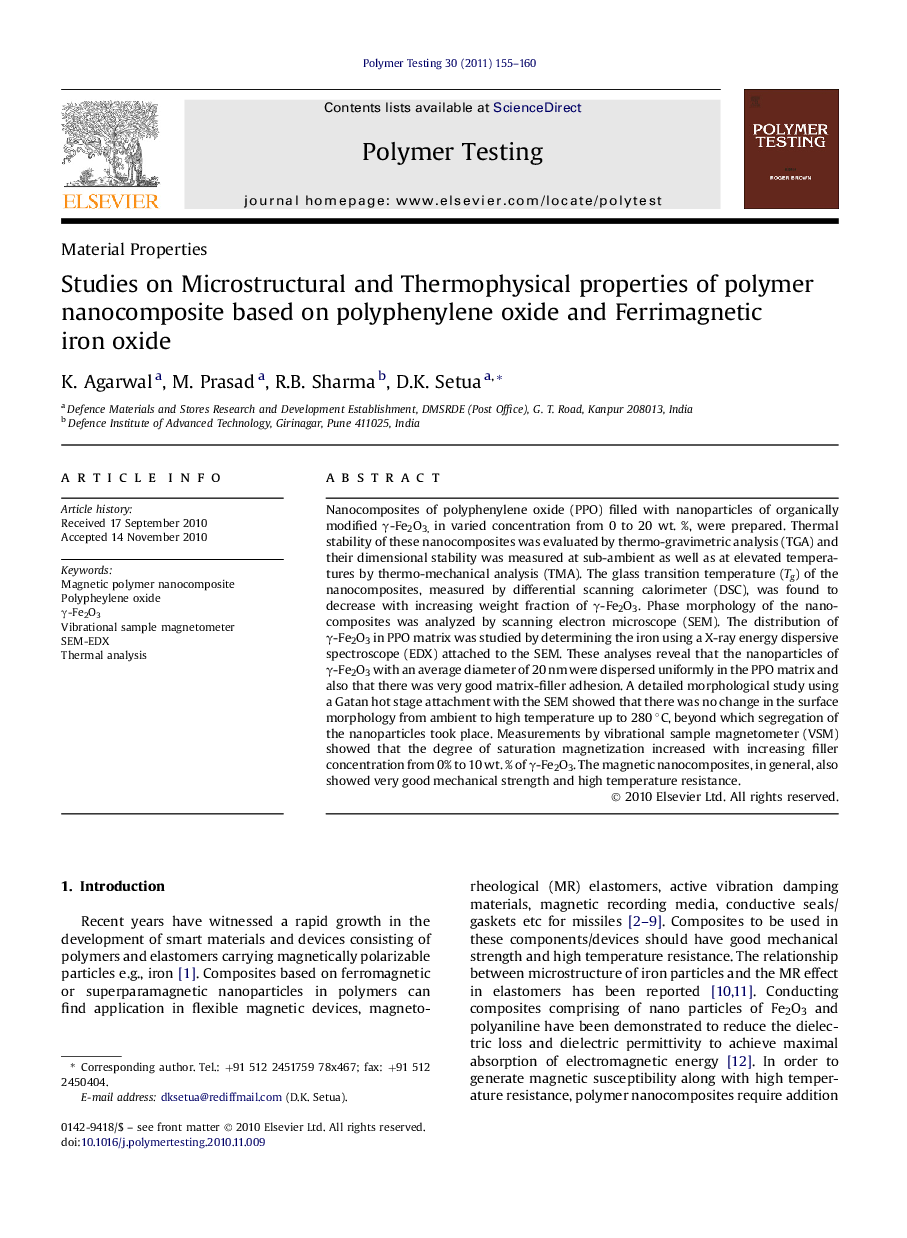| Article ID | Journal | Published Year | Pages | File Type |
|---|---|---|---|---|
| 5207127 | Polymer Testing | 2011 | 6 Pages |
Abstract
Nanocomposites of polyphenylene oxide (PPO) filled with nanoparticles of organically modified γ-Fe2O3, in varied concentration from 0 to 20 wt. %, were prepared. Thermal stability of these nanocomposites was evaluated by thermo-gravimetric analysis (TGA) and their dimensional stability was measured at sub-ambient as well as at elevated temperatures by thermo-mechanical analysis (TMA). The glass transition temperature (Tg) of the nanocomposites, measured by differential scanning calorimeter (DSC), was found to decrease with increasing weight fraction of γ-Fe2O3. Phase morphology of the nanocomposites was analyzed by scanning electron microscope (SEM). The distribution of γ-Fe2O3 in PPO matrix was studied by determining the iron using a X-ray energy dispersive spectroscope (EDX) attached to the SEM. These analyses reveal that the nanoparticles of γ-Fe2O3 with an average diameter of 20 nm were dispersed uniformly in the PPO matrix and also that there was very good matrix-filler adhesion. A detailed morphological study using a Gatan hot stage attachment with the SEM showed that there was no change in the surface morphology from ambient to high temperature up to 280 °C, beyond which segregation of the nanoparticles took place. Measurements by vibrational sample magnetometer (VSM) showed that the degree of saturation magnetization increased with increasing filler concentration from 0% to 10 wt. % of γ-Fe2O3. The magnetic nanocomposites, in general, also showed very good mechanical strength and high temperature resistance.
Related Topics
Physical Sciences and Engineering
Chemistry
Organic Chemistry
Authors
K. Agarwal, M. Prasad, R.B. Sharma, D.K. Setua,
